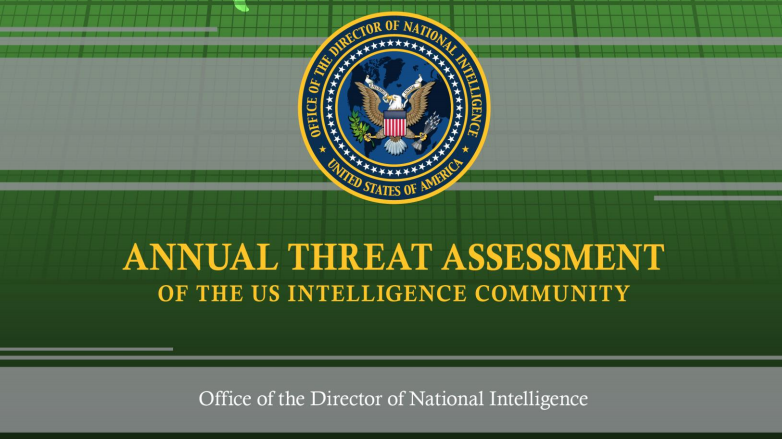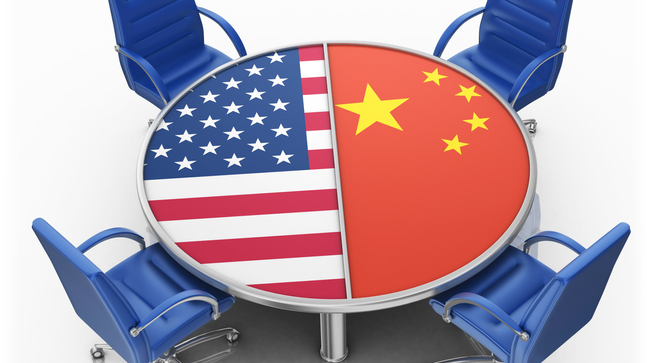
The cover of the report of "Annual Threat Assessment of the US Intelligence Community" released by the Office of the Director of National Intelligence (ODNI). /Screenshot via DNI.gov
The cover of the report of "Annual Threat Assessment of the US Intelligence Community" released by the Office of the Director of National Intelligence (ODNI). /Screenshot via DNI.gov
Editor's note: Hamzah Rifaat Hussain is a former visiting fellow at the Stimson Center in Washington and serves as assistant researcher at the Islamabad Policy Research Institute (IPRI) in Pakistan. The article reflects the author's opinions and not necessarily the views of CGTN.
The U.S. Office of the Director of National Intelligence (ODNI) released a declassified 27-page report indicating the most immediate security threats to the United States in 2021. By echoing previously stale assessments, China featured prominently with conclusions drawn that Beijing is engaged in systematically targeting the U.S. and spreading its influence by undercutting Washington's own. Facts though, clearly suggest otherwise.
The analysis represents conclusions of all of 18 American intelligence agencies and warns that the Chinese leadership views intensifying cooperation with the U.S. as an "epochal geopolitical shift." In truth, geopolitical shifts, be it military build ups in the South China Sea or leveraging alliances as part of maximum pressure strategies is of Washington's own calling. The ODNI report also provides further evidence of more pressing existential threats which require immediate attention by the Biden administration.
Jeff Seldin, National Security Correspondent at the Voice of America has underlined how terrorist groups such as the Islamic State and Al Qaeda have demonstrated remarkable resilience despite leadership losses and are taking advantage of ungoverned territories to regroup and gain potency.
The resuscitation of terrorist outfits cannot be addressed by augmenting the Chinese or Russian threat but is inextricably linked with American policies in Afghanistan which includes inter alia fragile peace processes and troop withdrawal plans. In terms of existential threats to American interests, ODNI's declassified findings fall short in providing factual information on previously flawed American policies which require immediate attention.
Disproportionate attention has also been paid to China's military build ups while paying scant attention to American maneuvers. The importance of deterrence and its relevance in the international system for sovereign states, has also been downplayed where according to American officials-China is relentlessly pursuing additional military installations across the world and access agreements to project power. On the nuclear front, China is considered to be building a large and increasingly capable nuclear missile force that is more survivable, more diverse and on high alert.

A round table covered with U.S. and China national flags. /Getty
A round table covered with U.S. and China national flags. /Getty
Perhaps officials could draw some lessons from American academic and Senior Fellow at the Center for International Security and Cooperation at Stanford University, Scott Sagan's "group of three models" explaining why states develop nuclear weapons in the first place. Existential threats to China's sovereignty, fomenting domestic discord in territories such as Xinjiang and established norms based on rationales presented to maintain nuclear capabilities in the global non-proliferation regime which provides justifications for China to maintain credible minimum deterrence. China adheres to the "no-first use" policy and retains the right to respond which is not based on aggression as the report erroneously states but to dissuade and deter.
Intelligence analysts further expect that Beijing will be able to secure a presence in space which entails threats to cyberspace and possibilities of causing localized, temporary disruptions to critical infrastructure in the United States. Eric Berger, senior space editor at Ars Technicia who has covered skewed NASA policies on CNN claimed that the 21st century space race is not between China and NASA as per se but squarely between the Chinese and American commercial space industries. This is also not a rivalry between governments which can result in Chinese sponsored disruption as mentioned in the report.
At the same time, intelligence analysts do believe that there are possibilities for both the American and Chinese leaderships to work together but assert that China will use tactical opportunities to deescalate only if it is aligned with its own interests.
In multiple settings, Biden administration officials and their predecessors have constantly spoken about negotiating from a position of strength where Beijing is expected to pander towards American interests for any conductive dialogue to take place.
Hence, not much is different in these findings as they echo concerns raised by intelligence officials in other forums where in addition to China, both Iran and Russia pose an existential threat to the United States. It is critical that such alarmist assessments which are contestable are replaced with more impartial understandings.
Echoing sentiments instead of facts on China will not help.
(If you want to contribute and have specific expertise, please contact us at opinions@cgtn.com.)

